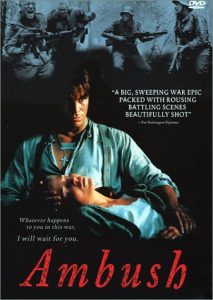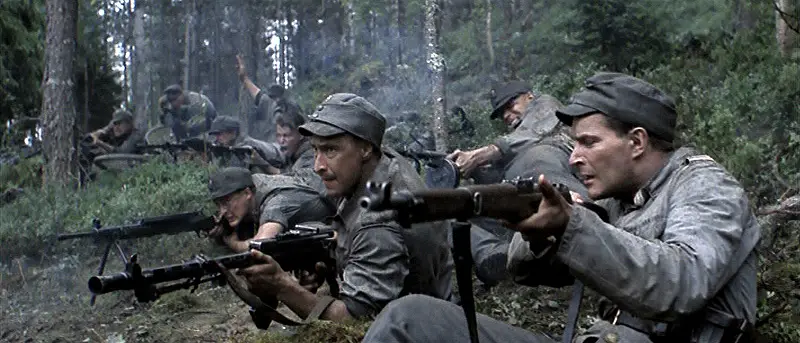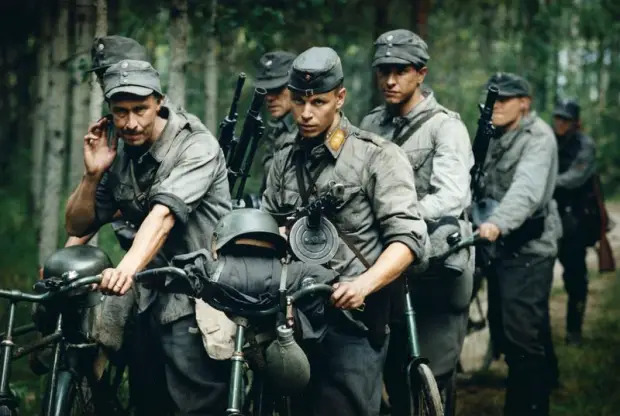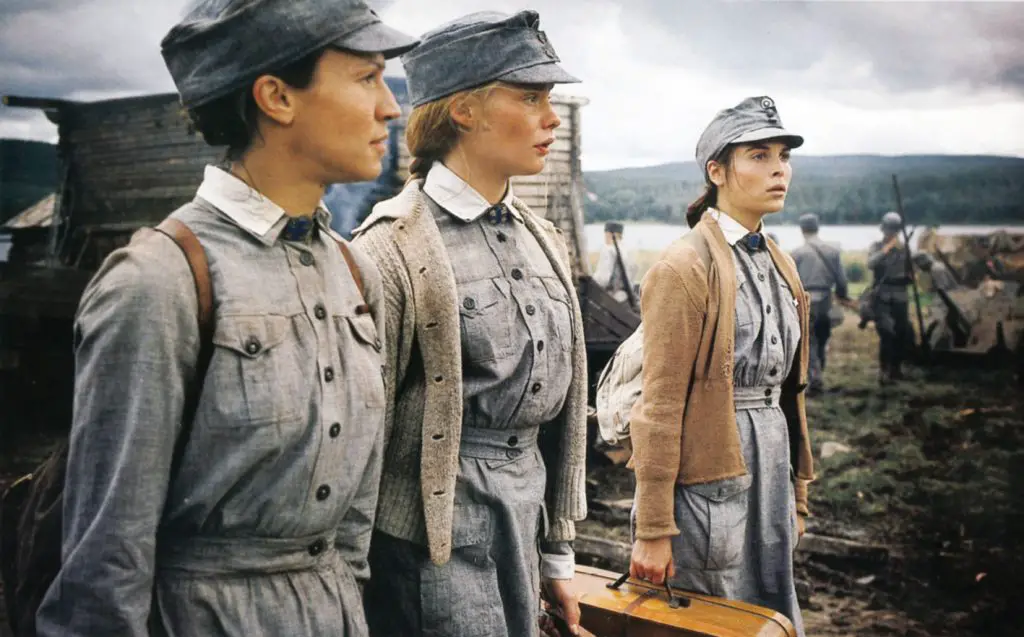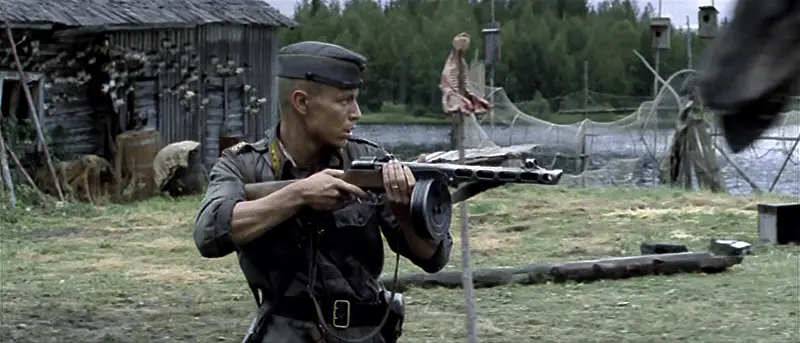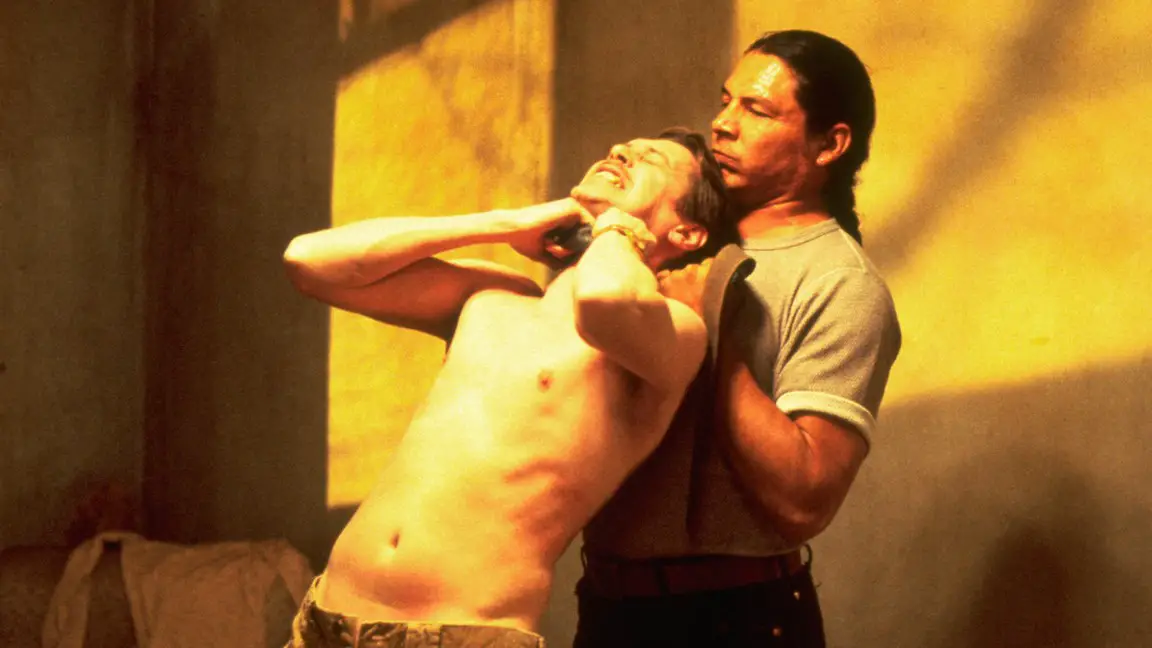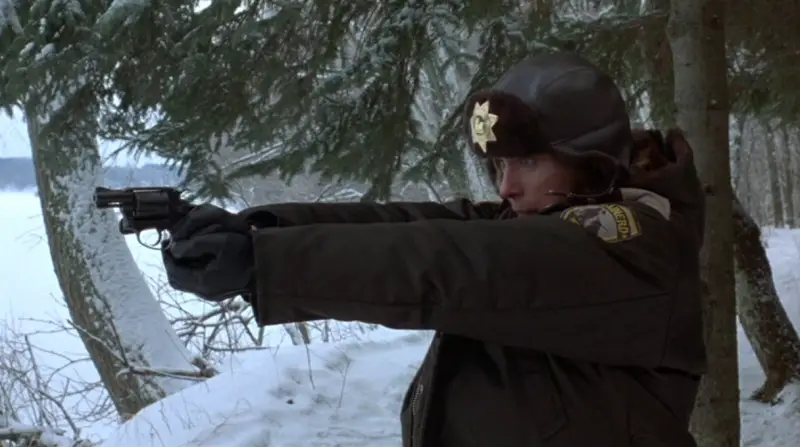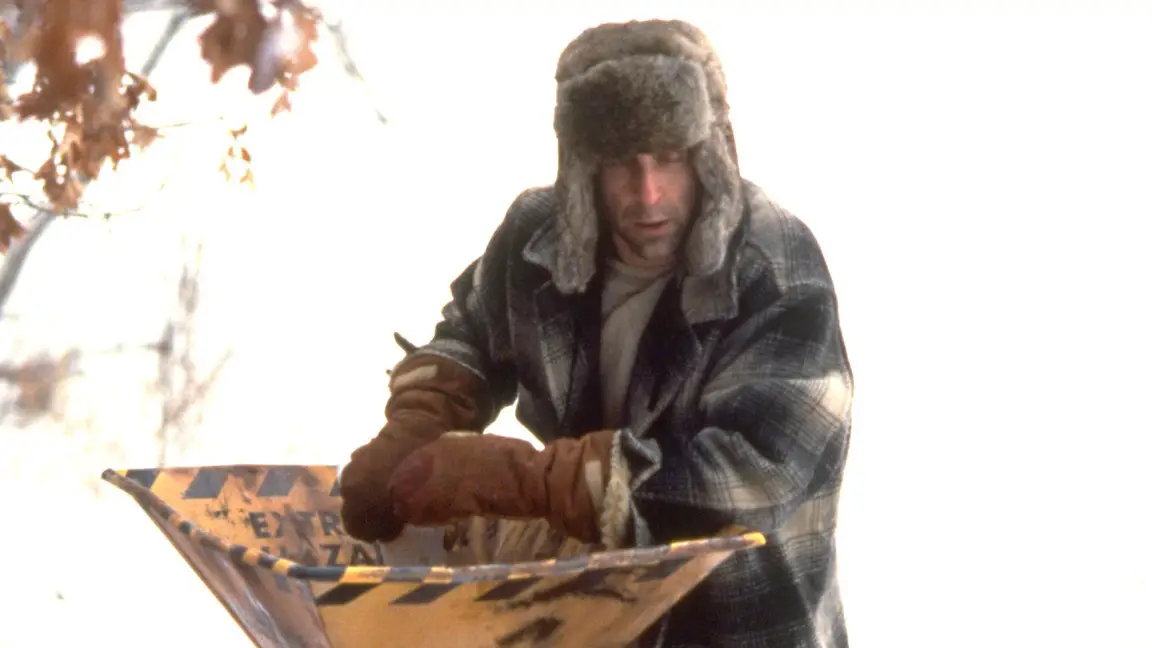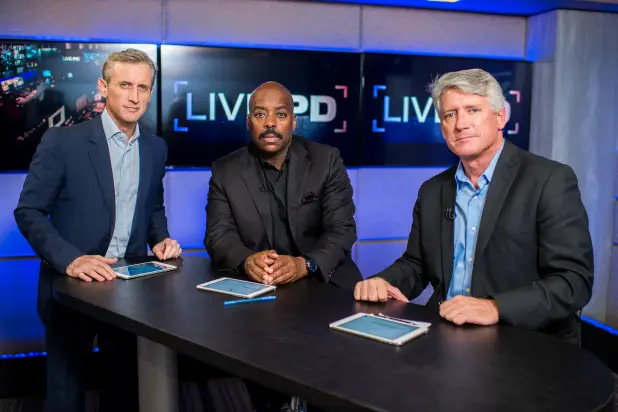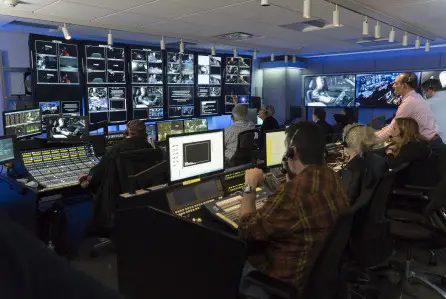Category Archives: Book and Film Reviews
Some of you may have seen this, but it’s pretty far off the beaten track. If you can live with subtitles (or if you understand Finnish, but what are the odds of that?) you may find this one worth pursuing. It’s a Finnish movie based on a novel by the same guy that wrote Talvisota (The Winter War), previously reviewed in this space. Its Finnish name translates to something like The Road to Rukajarvi, a Finnish town that was seized by the Soviets at the end of the Winter War and, in true Soviet style, ethnically cleansed.
The action takes place in the Continuation War, in which the Finns attacked the USSR, with the Soviet empire on the ropes due to the German attack. In the end, the Finns, who were seeking to redress the wrongs of the Winter War settlement, wound up defeated, in part because of the defeat of their German ally, but also because the Red Army of 1942-44 was not the same bag of incompetence that it was in 1940.
These grand-scale doings are told at the lowest level, as we follow the men of a bicycle-mounted reconnaissance platoon as they search the vast wilderness for the enemy axes of attack, and report back to their command. It is a low-budget war, at least on the Finns’ side, a Ruritanian-scale defense against a powerful empire. At this level, individuals, and how they work together, are vitally important. At this level a victory can be more fully shared; a defeat, or a casualty, are more fully taken to heart. You find yourself engaged with these young Finns and their risky mission.
Acting and Production
Unless you are Finnish, you are unlikely to know the actors in this drama. That doesn’t harm audience appreciation of the actors; it may, even, help, because the actors are as new to us foreigners as their characters are. Peter Franzén is especially strong as young lieutenant Eero Perkola, aged by the burden of command.
The Finnish scenery is at once breathtaking and very wild; it is one of the few places in Western Europe that retains significant wilderness. A great deal of cost and effort went into location photography, and it really pays off in the finished movie.
The action scenes move along smartly and build tension well. The “inaction scenes” and various flash-forwards and -backs tend to move very, very slowly. This is a long movie that does not need to be so long. Sometimes, the director seems too in love with the beauty of his images and dwells on them, to the detriment of pacing.
Accuracy and Weapons
As far as we could tell, the weapons were exactly what Finns and Soviets would be carrying in the Continuation War: Mosin rifles on both sides, although different in trim; Suomi and PPsh submachine guns; some Russians have Tokarev semi-autos. Supporting weapons like the Finnish Lahti M/26 light machine gun and Russian DP and Maxim MGs abound. Finns use some liberated Russian weapons; Franzén’s character Perkola uses a PPSh.
The weapons are, generally, used appropriately. They don’t produce flaming fireballs and Russian artillery doesn’t fire fireball shells. The vehicles seem period correct, and one has the impression that the crew worked very hard on detail accuracy. The most amazing thing is that this level of accuracy was achieved on the movie’s budget, reportedly $13 million.
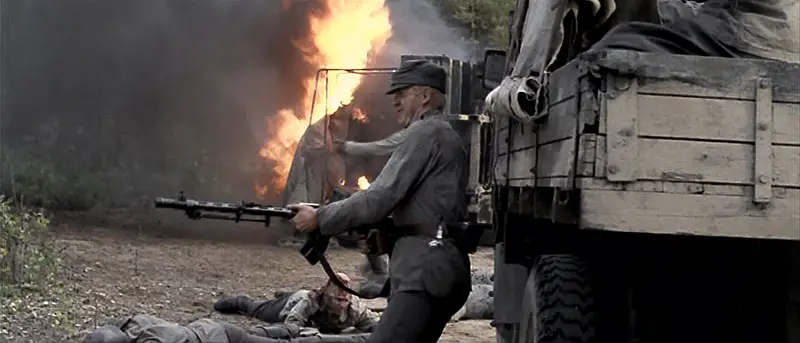
The gasoline fire in this scene is simple to explain — this is the eponymous ambush and a truck has been set alight.
The telling of the historical events of the war seem to be accurate, but bear in mind that this film focuses on the platoon — every higher echelon is supposed to be out of focus.
The bottom line
Ambush is a Finnish movie so you have to expect it to comport with the moody, even glum, national character. Moreover, it’s a tale of a decisive war told from the viewpoint of the guys who started the war, and lost. (Yes, they had a grievance, but they did start the war). It lacks the tank attacks and some of the other action of The Winter War, but it is an enjoyable and informative film about a part of Europe that’s off the beaten tourist track, and a phase of World War II that’s off the Anglosphere historical track, as well.
For more information
These sites relate to this particular film.
- Amazon.com DVD page. Note that it is an on-demand DVD and we’ve found these somewhat wobbly, quality-wise:
https://www.amazon.com/AMBUSH/dp/B001BXTQB4/
There is also a higher quality import CD for a lot more money. This is the one we watched!:
https://www.amazon.com/Ambush-Peter-Franz-n/dp/B00005Y717/
- IMDB page:
http://www.imdb.com/title/tt0162625/
- IMFDB page:
http://www.imfdb.org/wiki/Ambush_%28Rukaj%C3%A4rven_tie%29
- Rotten Tomatoes review page (no rating):
http://www.rottentomatoes.com/m/ambush/
- Infogalactic page:
https://infogalactic.com/info/Ambush_(1999_film)
- History vs. Hollywood Page. (none).
Notes
none
Free Novel by Nick Cole
Nick Cole is an actor and writer, who lost his publisher over the excellent novel CTRL, ALT, Revolt! last year. (We reviewed it here in one of our capsule-review roundups).
At the time (21 October, it says here ->), we also bought another Nick Cole novel, The Red King. It’s a strange apocalyptic tale that merges the we-got-nuked category of apocalypse with the omigawd-zombies category. While we suppose that’s not entirely original (weren’t Godzilla and The Great Behemoth products of nuclear bombs raising scary creatures?), Nick’s play on the book is original.
We forget what we paid for it, probably $2.99, but it was well spent, and now we want to share with you the fact that Nick has made it free for some time (I dunno how long, it’s Nick’s call) on Amazon.com. Nick explains it:
I just wanted to start out 2017 with a Free Book for anyone who wants to get lost in an adventure and take a break from all this end of the world doom and gloom. It’s a book about the end of the World!!!! Except fun! Think Lost meets The Walking Dead.
Of course, Nick has a couple of sequels out now, in what he’s calling the Wyrd series, and surely he hopes people like Your Humble Blogger who read and enjoyed The Red King, buy his other books and enjoy them, too.
And he wants you to get hooked on this kind of apocapopcorn crack, too. So go for it!
We do say that we found his characters… interesting. The protagonist, Holiday, is not especially likable, but you wind up rooting for him anyway. (Joe Finder has done this, too, given readers an unpleasant protagonist who still wins your sympathy and support, even if you are glad all your friends and family members are better people).
Most people who read The Red King will probably like the action scenes best, but Nick has a good ear for dialogue. Maybe that comes from his acting chops, maybe not. Here’s an example, in which Holiday is given some harsh if oblique criticism by Frank, a Vietnam vet:
“Fun guys are for Saturday night,” began Frank anew. “But you see, all this end of the world jazz… this ain’t Saturday night anymore. This is survival now. End of the world type stuff. Back in ‘Nam we didn’t have room for fun. That was for the college kids burning their draft cards and smoking marijuana. Calling us baby-killers so they could make their professors proud of ‘em. In ‘Nam it was serious. Every day for thirteen months and sixteen days. I knew guys that got it early and guys that got it at the end. Taking it seriously made a difference. At least sometimes.”
A bat flapped overhead in the dark, its leathery wings beating at the stillness and heat of the night.
“Other times,” continued Frank after drawing on his cigar. “Someone else got it because another guy didn’t do his part. Usually because he was too busy goofing off. All because he just wanted to have some fun. And that’s where we are now, kid.”
Cole, Nick (2015-12-23). The Red King (Kindle Locations 3135-3142). Nick Cole. Kindle Edition.
Nick provides this shortened link:
Which enlongenates to:
Amazon has it listed under Science Fiction, but there’s no droids or phasers here, just a post-nuclear, zombie-filled LA. Kind of like Rodney King Riots that never end.
We hope you enjoy The Red King as much as we did.
Saturday Matinee 2016 052: Fargo (1996)
Fargo is exciting, imaginative, original, and compelling; it makes everybody’s best-of lists, and despite that, the famously imitative Hollywood establishment hasn’t knocked it off. It’s sui generis; it defies imitation, because all of its unique features lock together so well.
It’s the production/directing/writing skills of the Coen brothers (Joel and Ethan), plus the acting talent of an ensemble cast, plus the absolutely unique but eerily authentic setting in wintry Minnesota that glue the audience’s eyeballs open for the entire runtime of the movie.
It also defies genre. It’s dark and thrilling, in places, for a comedy; it’s too funny, in others, for a drama. It’s not a police procedural, even though an unlikely but able cop effectively pursues a bizarre criminal conspiracy; it’s not a caper flick, even though an unlikely, impulsive and incompetent gang of criminals pursue a big score from end to end.
Guns don’t play that big a role in the production, despite the movie containing more murders of well-off white people than a typical year in Minnesota. Sure, there’s shootings, fatal and not, but there’s also an epic non-fatal beatdown, an ax murder, a chair murder (offscreen), and a firewood assault.
You also see Minnesota’s arguably greatest celebrity, the late Prince, in a bit role where he doesn’t show his face, and gets shot (he’s credited, as “Victim in Field,” by the unpronounceable symbol he once affected as a name).
Acting and Production
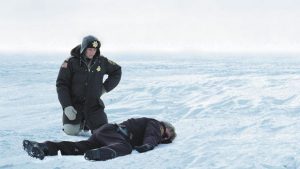 The acting is a strength of the production, or is it the script? Where does one leave off and the other begin? Frances McDormand won the Best Actress Oscar for her performance as Brainerd, MN, Police Chief Marge Gunderson, and seldom has a statuette been more deserved. McDormand could do 100 classic films, and this still will be the one for which she’ll be remembered. William H. Macy’s dangerous weasel of a car salesman, Jerry Lundergaard, is also a perfectly cast role. The two gangsters, Steve Buscemi as an impulsive, boastful sleazeball and Peter Stormare as a brooding, sociopathic menace, are the sort of criminals whose real-world existence the papers daily attest. You never think, “he’s acting a good criminal,” you think, “egad, what a criminal.” The second line supporting cast, mostly little-known but hard-working actors, make their roles come alive.
The acting is a strength of the production, or is it the script? Where does one leave off and the other begin? Frances McDormand won the Best Actress Oscar for her performance as Brainerd, MN, Police Chief Marge Gunderson, and seldom has a statuette been more deserved. McDormand could do 100 classic films, and this still will be the one for which she’ll be remembered. William H. Macy’s dangerous weasel of a car salesman, Jerry Lundergaard, is also a perfectly cast role. The two gangsters, Steve Buscemi as an impulsive, boastful sleazeball and Peter Stormare as a brooding, sociopathic menace, are the sort of criminals whose real-world existence the papers daily attest. You never think, “he’s acting a good criminal,” you think, “egad, what a criminal.” The second line supporting cast, mostly little-known but hard-working actors, make their roles come alive.
The production moves rapidly, and makes the cold, flat, barren landscape of the upper midwest into a character of its own, one that makes the viewer see the plausibility in car dealers’ get-rich-quick schemes and in the sordid interactions of professional, if small-time, criminals. The screenplay also won an Oscar, and like McDormand’s, it was well-deserved.
Accuracy and Weapons
For a movie with lots of cops on screen for lots of time, and depicting lots and lots of murders, guns are not as big a player in the movie as you might expect. The guns are plausible for the era and location. The cops still carry revolvers, Chief Gunderson, naturally, a Chief’s Special.
The bad guys seem to use one or more SIG 22xs, usually at “I seldom miss at this range” range.
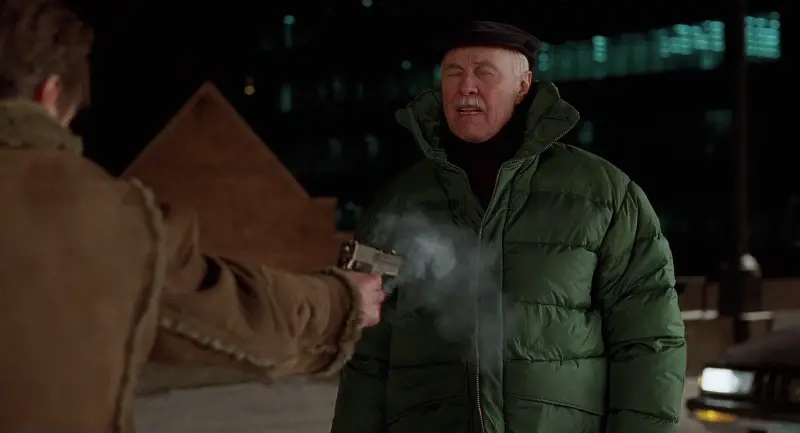 There’s no rifles, shotguns, tanks, Bearcats, or gigantic fireball explosions, but that’s par for the course for the 1980s and 90s.
There’s no rifles, shotguns, tanks, Bearcats, or gigantic fireball explosions, but that’s par for the course for the 1980s and 90s.
One inaccuracy of the on-screen gunplay is, well, excessive accuracy: every shot fired hits, even though they’re all fired by the worlds two least skilled classes of marksmen: criminals and cops.
Guns aren’t the only weapons used here. There are also many other personal and improvised weapons used in the various on-screen crimes and atonements therefor, including the legendary woodchipper.
There is an ax murder, that is not shown in graphic detail, but that takes place only after a ton of foreshadowing. Chekov’s Gun has nothing on Paul Bunyan’s Axe, and that’s all we’re going to say about that.
The bottom line
Fargo is a delightfully entertaining movie, with deep characters that deserve audience boos and hisses, and that earn that reaction by their actions on screen, not by moviemakers actuating tired old tropes. The Coens are famous for their refusal to ever make the same movie twice, and perhaps that is part of why they never make a movie that is dull or clichéd, but instead make entertainment that is not only worth watching, but almost impossible to stop watching. Fargo was 20 years old last year, and it’s time for it to find a new audience.
For more information
These sites relate to this particular film.
- Amazon.com DVD page:
- IMDB page:
http://www.imdb.com/title/tt0116282/
- IMFDB page:
http://www.imfdb.org/wiki/Fargo_(1996)
- Rotten Tomatoes review page (96%):
https://www.rottentomatoes.com/m/fargo/
- Infogalactic page:
Saturday Matinee 2016 51: Die Hard (1988)
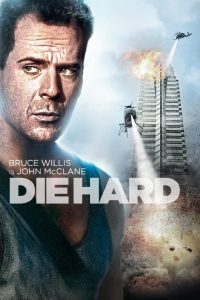 What’s your Christmas movie? Are you a Miracle on 34th Street kind of guy, or maybe an It’s a Wonderful Life gal? Pffft. Here at WeaponsMan.com, our Christmas Movie is Die Hard.
What’s your Christmas movie? Are you a Miracle on 34th Street kind of guy, or maybe an It’s a Wonderful Life gal? Pffft. Here at WeaponsMan.com, our Christmas Movie is Die Hard.
By now, the plot of this perennial is probably as familiar as 34th Street’s or Wonderful Life’s, so expect this review to abandon any pretense of protecting you from spoilers.
(Are there really any spoilers any more? The good guys come from behind to kick bad guy ass, the bad guys get their asses kicked, and all the usual tropes).
We’re not kidding about tropes, either. We have the cultured villain who must explain himself, the hero crawling through air vents (and walking over broken glass), the Eurotrash terrorists,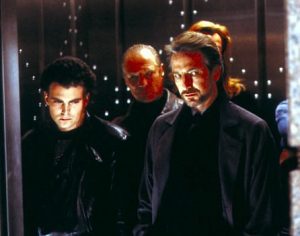 who are destined to go down in history as the terrorists with the best hair ever, the black computer hacker, the overbearing but incompetent FBI guys, the police chief or deputy chief who’s become a political weevil, the TV reporter who was Ron Burgundy before Ron Burgundy, etc., etc.., etc., with the most unbelievable thing probably being the ex who secretly wants her estranged husband back. Really.
who are destined to go down in history as the terrorists with the best hair ever, the black computer hacker, the overbearing but incompetent FBI guys, the police chief or deputy chief who’s become a political weevil, the TV reporter who was Ron Burgundy before Ron Burgundy, etc., etc.., etc., with the most unbelievable thing probably being the ex who secretly wants her estranged husband back. Really.
And yet… it all works. It’s just great fun.
Acting and Production
Two powerful performances anchor Die Hard: Bruce Willis as Detective John McClane, the first action role for a man who was, up until then, and never thereafter, known as a comedic actor… 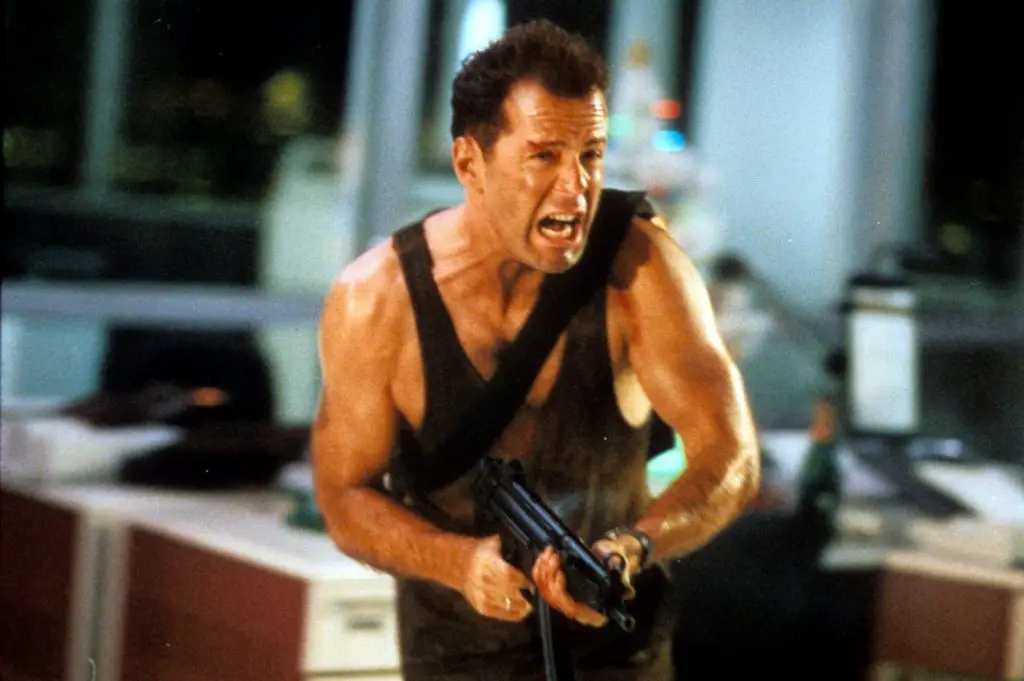 …and Alan Rickman’s perfect villain, Hans Gruber. “I am not a common thief,” Gruber seethes, when accused of just that. “I am an exceptional thief!”
…and Alan Rickman’s perfect villain, Hans Gruber. “I am not a common thief,” Gruber seethes, when accused of just that. “I am an exceptional thief!” 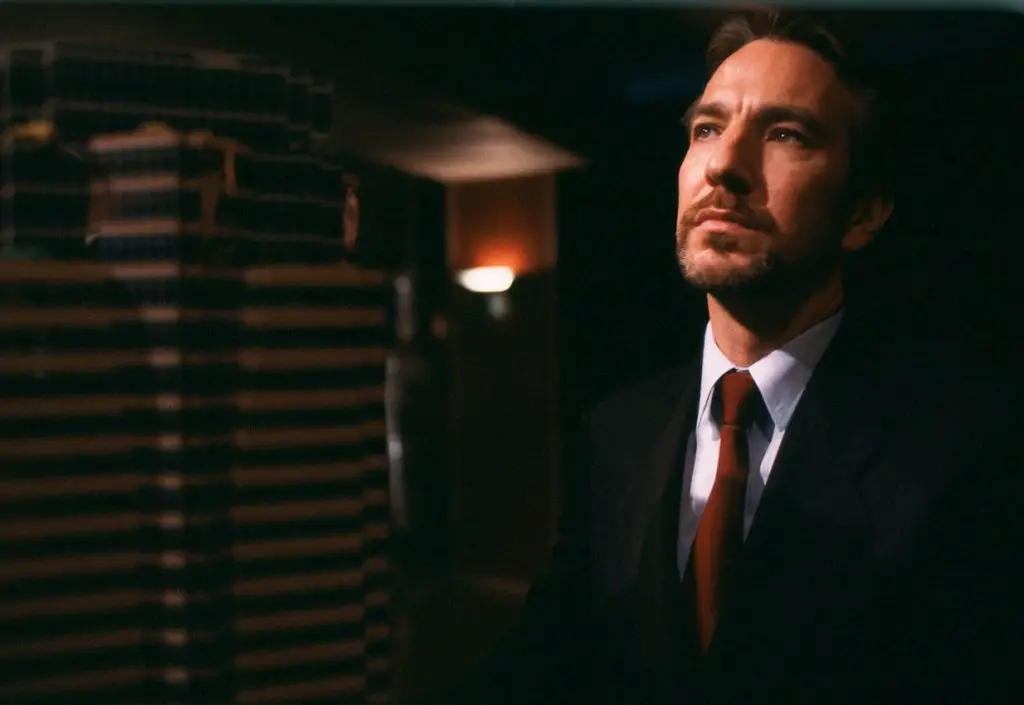 He is an urbane terrorist, or criminal; he has an eye for Savile Row tailoring, and his personal theme in the soundtrack is the chorale motif from Beethoven’s 9th Symphony. The Hans Gruber role could easily have turned into an over-the-top example of scenery-chewing, in the hands of a lesser actor.
He is an urbane terrorist, or criminal; he has an eye for Savile Row tailoring, and his personal theme in the soundtrack is the chorale motif from Beethoven’s 9th Symphony. The Hans Gruber role could easily have turned into an over-the-top example of scenery-chewing, in the hands of a lesser actor.
Other actors who keep the audience entertained are Richard VelJohnson as a solid LAPD cop, stuck on desk-sergeant duty because he could never fire at a human again after being cleared in a mistaken shooting of a teenager whose “gun” was a toy ray gun… …and William Atherton’s repulsively narcissistic TV reporter.
The incomplete, under-construction Nakatomi Tower was actually 20th Century Fox’s Fox Tower which was at the time incomplete and under construction. While the 30th Floor set was constructed for the production, the under-construction floors were used more or less “as is.”
Accuracy and Weapons
Guns are front and center in the film. Early on, a traveler is alarmed to see that John McClane is armed. “I’m a cop,” McClane explains, cluing in both the traveler and the audience — well-done exposition. His sidearm is a Beretta 92, then riding high in public esteem. The “terrorist” gang are armed with suitably Teutonic MP5s, the iconic movie gun of the period, an AUG, and German pistols. Hans Gruber himself wields an elegant HK P7M13, which he uses to terrify people, to kill people who displease him, and is still gripping as he plummets from the Nakatomi Tower.
When McClane kills his first terrorist, he takes his MP5 and delivers the body to Gruber, with a mocking note: “Now I have a machine gun. Ho-ho-ho!”
The weapons generally aren’t used very realistically. There’s a great deal of MP5 spray-and-pray, although the film does stop just short of “dual-wielding whilst flying through the air.” There’s even some M60 machine gun spray-and-pray from helicopters, something that you’d think the real FBI would never sign off on, but then, Waco was right around the corner, so maybe the scriptwriter had a man on the inside.
One of the best, and most accurately acted, scenes was the fall of Hans Gruber. He was on a green-screen set and dropped on a rope with some 45-50 feet of slack, reaching a full stretch of about 70 feet. But Rickman was misled about when the drop would come, with the result that he was dropped before he was expecting it. Rickman wasn’t just acting terrified!
Of course, the director couldn’t resist milking that scene with slow motion. For all the realism in that scene, the show is full of fireball explosions and other Hollywood special effects. Although they do use flash-to-white and hold for a couple seconds to very accurately simulate the effect of a flashbang, and deserve credit for that.
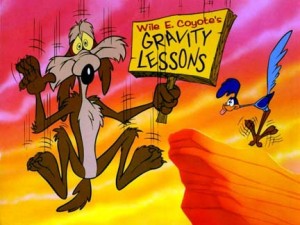 There are several examples of Hollywood Leap and Fall Physics®, which are no more accurate here then they are when Wile E. Coyote skedaddles off the cliff-edge of a mesa. one of the worst is when Willis’s character misses the point he leapt to and catches a window further down. Kids, don’t try this at home: acceleration is not your friend in this situation.
There are several examples of Hollywood Leap and Fall Physics®, which are no more accurate here then they are when Wile E. Coyote skedaddles off the cliff-edge of a mesa. one of the worst is when Willis’s character misses the point he leapt to and catches a window further down. Kids, don’t try this at home: acceleration is not your friend in this situation.
Kids, don’t try this at home!
The bottom line
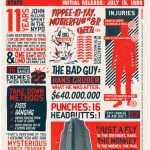 We (Your Humble Blogger and the Blogbrother) saw this in one of Big City’s multiscreens as one of their “old movie classic” screenings. It was a great way to see a great film.
We (Your Humble Blogger and the Blogbrother) saw this in one of Big City’s multiscreens as one of their “old movie classic” screenings. It was a great way to see a great film.
Die Hard is not just a great action movie, it’s the best Christmas movie ever.
For more information
These sites relate to this particular film.
- Amazon.com DVD page:
https://www.amazon.com/Die-Hard-Bruce-Willis/dp/B000O77SRC
- IMDB page:
http://www.imdb.com/title/tt0095016/
- IMFDB page:
http://www.imfdb.org/wiki/Die_Hard
- Rotten Tomatoes review page (92%):
https://www.rottentomatoes.com/m/die_hard/
- Infogalactic page (replaces Wikipedia):
Weaponsman Expert Book Reviews Nº. 5
 Expert! That’s us. Certified by the Weaponsman Board of Experts.
Expert! That’s us. Certified by the Weaponsman Board of Experts.
We put books into five categories:
- Read It Even if you Gotta Buy It;
- Get it at the Library;
- Read it if You’re a Specialist;
- Don’t Waste Your Time Reading It. And, last but not least:
- We read it, but we’re still not sure.
We also try to sneak in an online bonus reading suggestion or two, sometimes.
We link the titles to the book on Amazon; as a rule of thumb we link to the most economical option. We’re not yet an Amazon affiliate, though.
Read It Even if you Gotta Buy It
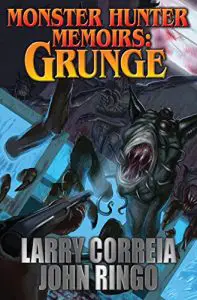 Monster Hunter Memoirs: Grunge by John Ringo and Larry Correia. This is the latest in the Monster Hunter series, but it’s also the first of a new series, a collaboration between the productive John Ringo and series originaror Larry Correia. It introduces new characters and a new period, the 1980s in Seattle. It’s very different in tone from Larry’s novels, but it’s an absolute blast, and the more of the 80s you remember, the more you’ll like it.
Monster Hunter Memoirs: Grunge by John Ringo and Larry Correia. This is the latest in the Monster Hunter series, but it’s also the first of a new series, a collaboration between the productive John Ringo and series originaror Larry Correia. It introduces new characters and a new period, the 1980s in Seattle. It’s very different in tone from Larry’s novels, but it’s an absolute blast, and the more of the 80s you remember, the more you’ll like it.
Of course, maybe stories of humans blowing away (And if you like Grunge, you’ll like its sequel, Monster Hunter Memoirs: Sinners, too; it’s set in New Orleans). Note that links are to the Kindle editions; we read them in the more expensive hardcover, and the paperbacks won’t be out till midsummer 2017.
Get it at the Library
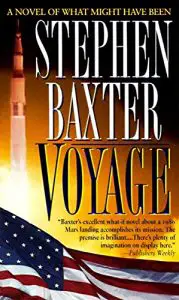 Voyage by Stephen Baxter. Before there was Andy Weir and The Martian, there already was a serious story about journey to Mars, Stephen Baxter’s The Voyage. It’s an “alternate history” in which Nixon decided to cut Apollo moon flights a lot and build towards an Apollo-based mission to Mars in the 1980s, instead of cut Apollo a little and build the Space Shuttle. (The latter is what happened in the real-world timeline). We’ve linked to the Kindle version, but we read a library-surplus hardcover that we bought for $1 from a library thrift store. If there is a better entertainment value than used books, we surely can’t think of what it is.
Voyage by Stephen Baxter. Before there was Andy Weir and The Martian, there already was a serious story about journey to Mars, Stephen Baxter’s The Voyage. It’s an “alternate history” in which Nixon decided to cut Apollo moon flights a lot and build towards an Apollo-based mission to Mars in the 1980s, instead of cut Apollo a little and build the Space Shuttle. (The latter is what happened in the real-world timeline). We’ve linked to the Kindle version, but we read a library-surplus hardcover that we bought for $1 from a library thrift store. If there is a better entertainment value than used books, we surely can’t think of what it is.
No, it’s got nothing about weapons (although it breaks from our timeline by twisting the Kennedy assassination), but it’s got all kinds of cool retro tech. Like Weir’s The Martian, Voyage is an aspie’s delight of deep immersion in the problems of interplanetary travel and some of their solutions. Unbeknownst to us, this book was the first of a trilogy. We’re looking forward to reading the others.
Mr Mercedes by Steven King. Yes, King is a lefty who hates us gun-owners all. He’s also a novelist of staggering talent and considerable work ethic who has produced interesting works, mostly in the horror genre, for a lifetime. You don’t have to agree with the artist to appreciate the art, do you?
Mr Mercedes is a King entry in a genre not usually associated with him, the police procedural. He takes stock characters: the crazed killer; the retired, over-the-hill cop with one last job in him; and infuses them with three-dimensional reality. He even makes a stock character of current fiction — the black computer genius — believable, even to guys who have worked in tech.
He’s so good at getting inside the head of weirdos who kill people, that we worry about the guy, sometimes. But he’s also good at getting inside the head of weirdos who do good, and one of the most interesting characters in Mr Mercedes is a mentally fragile, medicated woman.
The book is the first in a trilogy; each begins with the same horrifying mass murder from the viewpoint of a different set of victims or responders. In keeping with modern publishing, they’re very overpriced, but used copies can be had for much less (buying them from Amazon usually incurs a $4 postage charge, though, even if the book only sells for a penny).
Read it if You’re a Specialist
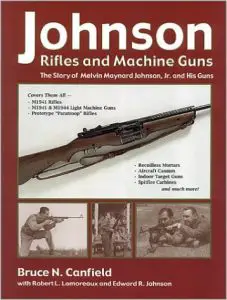 Johnson Rifles and Machine Guns by Bruce N. Canfield. Anything of Canfield’s that we have read is enjoyable reading for the gun geek, and packed with carefully curated information. This book, which is at once a commercial and technical history of one of the most-discussed (and least-used) US weapons systems of World War II, is valuable to the Johnson collector or fan. It has a great deal of information about Melvin Johnson’s invention, industrial efforts, and his long and quixotic battle to get his rifle and machine gun adopted or even tested by the United States military.
Johnson Rifles and Machine Guns by Bruce N. Canfield. Anything of Canfield’s that we have read is enjoyable reading for the gun geek, and packed with carefully curated information. This book, which is at once a commercial and technical history of one of the most-discussed (and least-used) US weapons systems of World War II, is valuable to the Johnson collector or fan. It has a great deal of information about Melvin Johnson’s invention, industrial efforts, and his long and quixotic battle to get his rifle and machine gun adopted or even tested by the United States military.
Johnson’s efforts at winning Government approval fell short, but thanks to the care the US Marine Corps took with their ex-Dutch Johnson M1941 rifles, the majority of these arms survived to be prized by today’s collectors.
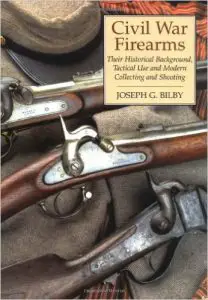 Civil War Firearms: Their Historical Background and Tactical Use by Joseph G. Bilby. Bilby is a unique combination of shooter, collector and historian, so if you are any of those things, or generally interested in the arms of the American Civil War, this book is very worthwhile for you. The weapons used by Union and Confederate forces were varied in type, operating system, combat utility and nation of origin, and Bilby is the perfect guy to explain them to readers with an interest and any level of prior knowledge, from zero to expert.
Civil War Firearms: Their Historical Background and Tactical Use by Joseph G. Bilby. Bilby is a unique combination of shooter, collector and historian, so if you are any of those things, or generally interested in the arms of the American Civil War, this book is very worthwhile for you. The weapons used by Union and Confederate forces were varied in type, operating system, combat utility and nation of origin, and Bilby is the perfect guy to explain them to readers with an interest and any level of prior knowledge, from zero to expert.
Note that while we linked to the current paperback edition for those that want a new book, we got a perfect-condition used hardcover for less money, including shipping.
Don’t Waste Your Time Reading It
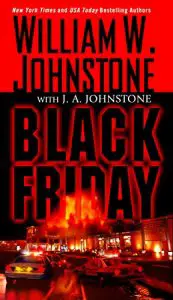 Black Friday by William W. Johnstone with J.A. Johnstone. We were disappointed by the novel Black Friday, which is credited to prolific Western writer William Johnstone, who was born in 1938 and has been dead since 2005, and his niece J.A. Johnstone, who has a publication schedule (about a novel a month) that makes one suspect a small army of ghostwriters is at work.
Black Friday by William W. Johnstone with J.A. Johnstone. We were disappointed by the novel Black Friday, which is credited to prolific Western writer William Johnstone, who was born in 1938 and has been dead since 2005, and his niece J.A. Johnstone, who has a publication schedule (about a novel a month) that makes one suspect a small army of ghostwriters is at work.
The story is the classic hadji-terrorist-in-a-shopping-mall yarn, and it’s been better done before, notably in Stephen Hunter’s 2011 Soft Target.
The Kindle edition is overpriced, which is the publisher’s fault, not the authors’.
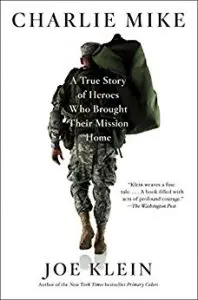 Charlie Mike: A True Story Of Heroes Who Brought Their Mission Home by Joe Klein. This book seems to have been one of several attempts by the Acela Corridor Media establishment to launch the political career of a former SEAL officer named Eric Greitens, who actually never served as an operational SEAL; in a temporary assignment as a SWCC commander he turned in some sailors and an officer who were using and selling drugs, and this act of conscience, which ensured his unit’s integrity, got the Blue Falcon label applied to Greitens, fairly or not. Even by SEAL standards, Greitens is monumentally ambitious and spotlight-seeking. Joe Klein tells the story of Greitens’s and others’ forays into the world of public service, but you are always left with the slightly uncomfortable feeling that everything, to Greitens, is solely valued based on its utility to his career. In the end, an attempted hagiography wound up putting this reader off. What we don’t need is more camera-chasing professional veterans pimping a “vets are damaged goods” narrative.
Charlie Mike: A True Story Of Heroes Who Brought Their Mission Home by Joe Klein. This book seems to have been one of several attempts by the Acela Corridor Media establishment to launch the political career of a former SEAL officer named Eric Greitens, who actually never served as an operational SEAL; in a temporary assignment as a SWCC commander he turned in some sailors and an officer who were using and selling drugs, and this act of conscience, which ensured his unit’s integrity, got the Blue Falcon label applied to Greitens, fairly or not. Even by SEAL standards, Greitens is monumentally ambitious and spotlight-seeking. Joe Klein tells the story of Greitens’s and others’ forays into the world of public service, but you are always left with the slightly uncomfortable feeling that everything, to Greitens, is solely valued based on its utility to his career. In the end, an attempted hagiography wound up putting this reader off. What we don’t need is more camera-chasing professional veterans pimping a “vets are damaged goods” narrative.
Greitens is the Governor-Elect of Missouri, after a 2015 party change to Republican (one wonders what Klein, who was so eager to promote him when he was a Democrat, thinks of that), and we’re told that news reports there have said he favors waiting periods for firearms.
We Read It, But We’re Still Not Sure
Nothing in this category this time out. We had put Klein’s Charlie Mike in there, but we reconsidered it and demoted it to the don’t-bother bin. The price of both Kindle and paperback being an unreasonable $12-13 was the deciding factor. Overpriced for its quality by an order of magnitude.
To the Readers:
Our objective had been to do two of these in an average month. But we got off schedule; this one is overdue by ages. Our last, Weaponsman Expert Book Reviews Nº 4, ran months ago. We not only think this is a better thing to post than a When Guns are Outlawed on Christmas Eve, we also really want to live up to that, going forward, or at least do one a month. We’ll see, eh?
In the New Year, we plan to become an Amazon affiliate so that if you buy a book from one of our links, it throws us a few cents.
For previous capsule reviews:
- 19 February 16. Weaponsman Expert Book Reviews Nº 1. Link.
- 08 March 16. Weaponsman Expert Book Reviews Nº 2. Link.
- 24 March 16. Weaponsman Expert Book Reviews Nº 3. Link.
- 19 April 16. Weaponsman Expert Book Reviews Nº 4. Link.
Saturday Matinee 2016 48: The Wild Geese (British, 1978)
The Wild Geese is a 1978 mercenary movie largely written and filmed in the tradition and with the sensibility of classic all-star war movies like The Guns of Navarone, or even action westerns like The Magnificent Seven (the real one). You have a small group of sharply-formed characters presented with a mission against astronomical odds, which keep getting more astronomical as the mission plays out through the planning and execution stages, until finally, they prevail through adversity and sacrifice. Or not.
Rewatching it recently, the harsh opinion we had of it as young troopers in 10th Special Forces Group had somewhat mellowed by time, and by the sheer formulaic repetition of 21st Century action movies. It was a thoroughly enjoyable “combat procedural,” even though the procedures at times were Hollywood enough to put your teeth on edge.
It begins when an old mercenary colonel, Alan Faulkner (Richard Burton), is contracted by the amoral businessman Sir Edward Matheson (Stewart Granger) to rescue deposed African politician Julius Limbani (Winston Ntshona). Limbani is beloved of his countrymen, partucularly his own tribe, but Matheson could care less; he has just reached an impasse in copper concession negotiations with the successor that deposed Limbani, General Ndofa. Ndofa and his elite Simba troops run a typical African state of the period (or nearly any period): a brutal, kleptocratic dystopia. As Matheson explains it, the mission is simple: liberate Limbani before Ndofa can execute him, and then Limbani will rally the nation to overthrow Ndofa.
Securing financing from Matheson and the services of three officers, two of whom he demanded based on past service, a sergeant major, and some colorful NCOs, Faulkner recruits a small company and trains it in Swaziland. The training is interesting (if fanciful), but before you know it, the mission timetable is pushed up and through a splendidly performed (if fanciful) HALO jump, and they’re in the target nation and game is on. At this point, you might not have noticed it, but a whole hour of the movie has elapsed.
Lower flag, seen for only a second, is the Wild Geese flag. Watch for it!
In combat, nothing goes according to Rafer Janders’s (Richard Harris) brilliant plan. Can he plan as well on his feet as he could back in London? The game is afoot, and bullets are flying.
Acting and Production
There are few movies with such an all-star cast: Richard Burton, Richard Harris, Roger Moore, and Hardy Kruger play the four officers of the fifty-man mercenary outfit. Each plays a very distinct character: Burton plays Faulkner, a hopeless drunk when he wasn’t working. (Burton, who could be a hopeless drunk, was on the wagon when he was shooting The Wild Geese); he’s in it because it’s the only thing he knows how to do. Harris plays Janders, who’s happily retired and trading art, but whose planning skills Faulkner wants, but whose idealism Faulkner could do without; he’s in it because he believes in the unifying message of the threatened African politician, Limbani. Roger Moore plays a wisecracking, impulsive guy, Shawn Fynn, not too dissimilar from Moore’s then-current version of Bond; he’s in it for the laughs, although he won’t say no to money. And Kruger turns in an excellent performance (with one jarring note) as Pieter Coetzee, an apolitical South African whose contempt for idealists of all colors and genres has always served him well. He wants his paycheck to buy a farm. (Kruger has been quite hard on his performance and on director Andrew McLaglen in interviews).
Each character’s identity is deftly drawn in a few short scenes, Fynn’s including considerable action, that at one point is looking like a set-piece battle between mercenaries and mafia.
The secondary actors, to an even greater extent, make the film. Winston Ntshona is insistent and proud as Limbani, whose interplay with Kruger’s Coetzee is perfect, apart from the one jarring note. Kruger has completely sold the audience on the idea of a hard-core Afrikaner who sees the refined Limbani as just another “kaffir,” but has come around to respect him, and then he takes the familiarity one step too far, calling Limbani, “bloke.” Had the script understated that as “man,” it wouldn’t have been jarring and unbelievable.
A standout performance is Frank Findlay as Irish missionary, Father Geohegan, whose default form of address for the mercenaries is, “You murtherin’ baahstahds.” An actor with an interesting backstory is Ian Yule, who plays Tosh Donaldson. He was an actual mercenary, in the 60s in the Congo with Mike Hoare.
The movie was shot largely on location in Africa, and so avoids the menace of trying to sell California or London as some exotic location.
Accuracy and Weapons
The cool thing about a movie about a fictional mercenary band is that you can use almost any guns you want — and they do. Most of the guns are what you’d expect to find in Africa in the 1970s, including lots of FALs (several different kinds) and Uzis. The sergeant major carries a Sterling. They look like a rum bunch in this inside-the-Hercules shot:
Yes some of it’s very Hollywood, like the thermonuclear flame grenades.
And there’s the use of cyanide crossbow bolts, which makes up for being tactically loopy by being a very well-shot practical effect. Ready, aim…
Fire!
Cyanide also makes an appearance as a way to make a barracks of sleeping guards nod off permanently. In addition, look at the weapon held by the guy on the left: a dreadful Madsen submachine gun.
Crew-served weapons include Bren guns, Blindicides (called “bazookas,” and in one case, loaded with a mortar bomb), FN-MAGS, and a Vickers. Surely we’re missing some. The movie’s a gun-spotter’s delight.
Inaccuracies include the breathtaking parachute jump, which is unfortunately shot day-for-night. (If they were going to fake so much of the rest of it, why not have a day jump?) No, you don’t depressurize at 30,000 feet without oxygen.
The parachute “training” was unrealistic, too, with a 15-foot or so high PLF platform.
The bottom line
The Wild Geese is a must-see. As a mission-planning and -training guide, it’s just about worthless, but it’s great fun, and produced quite a number of long-lasting SF Tropes. Two especially lasting ones were: “Men, we’ve been double-crossed,” universally delivered in one’s best Burton at the point where an exfiltration has been cancelled, postponed or delayed, and “The Aullld Dakota,” because for decades everywhere we went there was an old DC-3/C-47 — flying or derelict.
Don’t double-cross yourself. Set aside two hours to enjoy this old show!
For more information
These sites relate to this particular film.
- Amazon.com DVD page:
https://www.amazon.com/Wild-Geese-30th-Anniversary/dp/B0009UVCQW/
- IMDB page:
http://www.imdb.com/title/tt0078492/
- IMFDB page:
http://www.imfdb.org/wiki/The_Wild_Geese
- Rotten Tomatoes review page (60% fresh):
https://www.rottentomatoes.com/m/wild_geese
- Infogalactic (replaces Wikipedia) page:
Book Review: Sporting Firearms: A Designers Notebook by Richard Florer
 We found this on Amazon and scanned the part of it that was visible online. We didn’t think it was valuable, lacking the sheet music (equations and other engineering data) of standard texts like Balleisen’s Principles of Firearms and the Rheinmetall Handbook, but then we thought — “If it’s no good, we should put a heads up on the Gun Design Books and Resources page.” And then we thought, “It would not be fair to write a critical review without reading the actual book. So we had better order it, and see.”
We found this on Amazon and scanned the part of it that was visible online. We didn’t think it was valuable, lacking the sheet music (equations and other engineering data) of standard texts like Balleisen’s Principles of Firearms and the Rheinmetall Handbook, but then we thought — “If it’s no good, we should put a heads up on the Gun Design Books and Resources page.” And then we thought, “It would not be fair to write a critical review without reading the actual book. So we had better order it, and see.”
We’re very glad we did, because Sporting Firearms: A Designers Notebook is a good and useful book. Our mistake was in expecting it to be a mechanical engineer’s text book, like the indispensable Balleisen. But it is just what the title says: a designer’s notebook, full of the designer’s tips and tricks, and descriptive of his experiences in designing specific firearms.
The case studies in this book stem from Florer’s double-barreled capabilities: he’s a mechanical engineer and has worked as one in the industry (rising to chief engineer), but he’s also a practical gunsmith at home with the lathe and milling machine (not to mention a set of files).
One of the most interesting projects here is a redesign of the Weatherby Vanguard short-action mechanism (the same as the Howa mechanism, not the Weatherby Mark V) to take extra-long cartridges. Why would a designer want to do that? Bear in mind that these are hunting rifles, chambered for typical short-action cartridges like the .308 or 7mm-08. The SAAMI spec for cartridge overall length of the .308 is what has defined the length of the short action, so that you’re forever limited to bullets that are no longer than the 1951 descendant of World War vintage M2 ball that was loaded in the GI 7.62. But modern hunting bullets are longer, for both aerodynamic and penetrative reasons.
They must either be loaded deeper in the casing, robbing powder volume, or loaded only in long-action guns. But Florer devised a modification that lets one load 180 grain bullets in a .308 with the base of the cartridge seated exactly where it is on a 150 grain soft point. The modifications allow the loading of a cartridge with an overall length of around three inches, even a hair more, compared to the SAAMI spec of 2.81″ for the .308.
The modification requires increasing the bolt travel, and lengthening the magazine box 0.200″, both of which are practical on the Vanguard action. (The resulting rifle can accommodate longer handloads, but still works with factory loads. The chamber and headspace are untouched and unchanged).
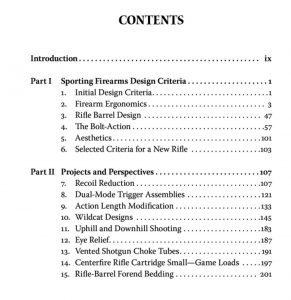 We won’t, and most readers of this book won’t, ever hack a Vanguard for longer, heavier bullets, but the value of the book is in what it teaches about the thought processes that go into developing such a modification safely.
We won’t, and most readers of this book won’t, ever hack a Vanguard for longer, heavier bullets, but the value of the book is in what it teaches about the thought processes that go into developing such a modification safely.
Another set of case studies involve development of unique necked .22 caliber wildcats, one for a rifle and one for a revolver.
A case that may be more broadly beneficial is a walk-through of the collaborative specifications development process for an unnamed firm’s new bolt-action hunting rifle. This is the framing device for Part I of the book (see contents at right), while Part II covers various specific projects..
Finally, there’s some ingenious mechanisms in here, including an adjustable tension (for accuracy) barrel forend bedding device, and several variations of set triggers, but, unfortunately, the technical details on these are sparse.
As sophisticated as firearm design is these days, publicly available information about it is still scant and scattered. Sporting Firearms: A Designer’s Handbook is a worthwhile addition to the canon.
Book publication press release (3 Jan 2013).
Saturday Matinee 2016 47: Live-PD (TV, 2016)
Television reality shows have long found the police worth following. The first of these was, naturally, the now defunct COPS, “filmed on location with the men and women of law enforcement.” A personal favorite is the A&E Network’s The First 48, which has followed homicide investigators in two or more major American metro areas for the last 14 years, but there are also shows that follow game wardens, roll with K9 officers, or ride along with another kind of detectives — the cruelty investigators of major metro SPCAs. Given the success of some of these shows, a few new permutations can be expected each season. But Live-PD is a permutation we weren’t expecting.
In a way, it’s a throwback to the early days of live TV, melded with the unscripted nature of reality shows. By Hollywood standards, it’s a ten-toes-hangout risk, because what the show does is follow police patrol officer, like COPS, but as the name implies, Live. (There is a delay of about two minutes, mostly to let producers scrub, bleep or blur things to protect citizens’ privacy and conform to corporate standards). It airs Friday nights on A&E for two hours (9-11 EDT). They capitalize on it by rebroadcasting a streamlined version on subsequent days, called Live-TV Rap Sheet. The first of eight budgeted episodes of Live-TV aired on 28 October; five or six of the episodes have aired.
How do they guarantee that you’re going to be seeing some action, and not just cops cooping behind the Dunkin Donuts on a slow night? Well, one, they’re going on Friday night, usually the kickoff of the weekend’s dope dealing, robbing, shooting and other stuff that we want law dogs taking their fangs to. And two, they’re going with six departments simultaneously.
There’s a lot of money in this: there are 30 cameras deployed, and six on-site producers, plus a whole command room, plus a host (Dan Abrams) and a couple of retired cops to tell Dan, who is curious but not expert, what he’s showing the audience.
The first show was a bit rough around the edges, and they still lose signals sometimes and make production errors — but they’re so rare, and the action you’re seeing is so informative, that you’ll forgive them (and subsequent shows have been much tighter, presumably as the team starts to gel).
Acting and Production
There’s no acting, of course, except to the extent that the cops act differently when they know they’re on camera, and of course, the criminals loudly claiming they Dindu Nuffin.
Abrams seems to be learning all this police procedure along with the audience, and it seems to be making a police buff out of him. His enthusiasm for understanding what the cops are doing, and why, is infectious.
“Hey, that guy admitted he had seven beers instead of the usual ‘two beers’ — how often does that happen?” he’ll ask his retired-cop color commentators, and he still seems amazed — like a rookie cop, in fact — at the degree to which people throw transparent lies at the cops. The cop commentators, retired Dallas detectives Rich Emberlin and Kevin Jackson, are just right for the job: guys you’d trust, if they were on the stand and you were in the jury box.
(In the end, by the way, the cops had the drunk’s wife come get him, so they could get him off the roads, and return to anti-gang patrol instead of spend the evening writing him up. He was in good spirits, until she arrived, at which point he told her: “Violence is not the answer!”)
The producers and cameramen ride with the cops all week, not just Friday night, and this means that they build some rapport, and even more importantly, they can follow the action when Dan drops the feed to them, cutting from the Fort Walton Beach FL Sheriff’s Department to the Tulsa, Oklahoma gang unit. “Our producer there will fill us in,” Dan promises, and the downrange producer brings us up to speed before the audio cuts to, say, the cops doing a consent search of a stopped vehicle.
Having the cameras and producers running all week also means that they can get a lot of interviews and B-roll to edit into featurettes and interpose among the live scenes.
Key to the success of the format is the selection of participating PDs. They are:
Bridgeport, Connecticut PD — a metro department in a failing mill town
Fort Walton Beach FL Sheriff’s Department — large county with rural, urban and suburban areas
Richland County, SC — sheriff’s department, includes the state capital, Columbia SC.
Arizona Department of Public Safety — state police / highway patrol
Tulsa, OK PD — metro department gang unit
Utah Highway Patrol — state police / highway patrol
As you see, that gives them a good demographic, mission, and geographical reach.
Accuracy and Weapons
There seems to be a dispute about how “live” it is because of the incorporation of B-roll and featurettes. We don’t know any other way a show like this could have been done at all.
It makes you wonder if a show like this could be done with military embeds.
Live-PD is an excellent look into the everyday life of the police and those they interact with. You will probably develop your opinions… perhaps they won’t be changed, or even shaken, but you’ll definitely have an awareness of complexities and nuances you don’t know already.
The bottom line
We’d say watch it; less because it is great TV than because it is a daring experiment, and daring experiments ought to be rewarded. And it’s certainly good enough TV that rewarding this daring experiment is not donning a complete hair shirt.
For more information
These sites relate to this particular film.
- Amazon.com
DVDpage: (streaming page for the “rap sheet’ edited version).
https://www.amazon.com/LIVE-PD-Rap-Sheet-3/dp/B01N028O60/
- Show’s own home page:
http://www.aetv.com/shows/live-pd
- IMDB page:
http://www.imdb.com/title/tt6237942/
- IMFDB page (none):
- Rotten Tomatoes review page (none):
- Infogalactic page (replaces Wikipedia): none (none on Wikipedia either).
A Book We Won’t Be Buying… Even Though We Want It
Think about that for a moment. Why not buy something, if you want it? We have been fortunate in life and can often just buy what we want, within reason. Of course, if we exercised no judgment about what to buy, that capability would erase itself in due course. One need only think of the football player (and this comparison works with real American football, which for the rest of the world is more like armored rugby, and just as well with rest-of-planet football, which involves kicking a ball and lots of 0-0 tied games) who is paid handsomely after rising to the top of his craft, only to be illiquid two years after his last championship season. Don’t Be That Guy, eh.
So for us, the most common reason for not buying something (inability to afford it), is not at play here. It is something we love (a book) about something we’re passionate about (martial history and art), and is a relatively rare opportunity. We’ve certainly spent greater sums than this without blinking, and we may have books that, by virtue of their rarity, approach this one in value.
But… but… it’s $750 for a book. No, wait, wait, we’re wrong, it’s £750 for a book, which is rather largely more. Even with the pound having taken it in the neck lately, it’s still about $1.25 today, making the book almost a thousand dollars.
Ah, but what a book!
The Royal Armouries have teamed up with specialist publishers of military manuscripts Extraordinary Editions to produce a limited edition full-size facsimile of the oldest and most precious book in the Royal Armouries collection, the manuscript I.33. Click here to learn how to order your copy.
The manuscript itself has a remarkable history. Dating from around 1310 the text is the earliest known surviving European Fechtbuch (combat manual). It was first recognised as an ancient source in Heinrich von Gunterrodt’s 1579 book titled De veris principiis artis dimicatoridae (On the True Foundations of the Art of Combat) which gave some insight into the manuscripts history.
The MS I.33, also known as the ‘Walpurgis’ or ‘Tower’ manuscript is thought to have been discovered in a Franconian monastery, passing through several hands and featuring in descriptions of the Saxe-Gotha Ducal holdings in the 18th, 19th and 20th centuries before disappearing during the second world war. The manuscript resurfaced and was purchased by the Royal Armouries at Sotheby’s Auction house in 1950.
Comprising of 32 parchment leaves of approximately 30x23cm each, the manuscript is richly illustrated depicting a priest and scholar demonstrating a step by step account of thirty eight combat sequences using a sword and buckler. The illustrations are accompanied by Latin verse describing these combat encounters, with some technical terms in German.
A book of swordsmanship from the turn of the century — the 14th Century. Reproduced in almost unbelievable quality. To support, in part, the Royal Armouries.
The manuscript was conserved and rebound in 2012 in preparation for an exhibition at the Wallace collection in London. This provided the opportunity for the manuscript to be photographed which enabled the production of this beautiful high quality facsimile volume.
Each image was subject to a rigorous digital examination to ensure a highly accurate reproduction of the original was created. The reprographics and printing was completed at the fine art department of Senecio Press and it was trimmed and bound at Ludlow bookbinders.
But then you get to that number:
Royal Armouries Edition – £750
The Royal Armouries Edition is limited to 600 numbered copies, each copy is fully leather bound by hand in a superior weight Nigerian goat skin, with raised bands over wood composite boards. The boards are specially created to replicate traditional binding without the associated problem of warping. The cover is embossed in gold with a figure from the manuscript; the spine is embossed with I.33 and the Royal Armouries and Extraordinary Editions logos.
And, we didn’t mention this, because we were still in atrial fibrillation over the 750 quid price, but that’s the bargain edition. You can spend more.
Exemplary Edition – £1500
There are just 26 lettered copies of the Exemplary edition available, the ideal choice for collectors and bibliophiles. The Exemplary edition is bound in a cover of folded veined vellum over quarter sawn oak boards. The boards have been sourced from 300 year old untouched oak. These stunning materials have been left unadorned in a binding of monastic simplicity suited to the provenance of the original. Inspired by illustrations of the period the Exemplary edition and companion volume are presented together in a bespoke handmade leather folder held by an oak peg.
Now here’s something that makes this cool:
Each copy of the manuscript comes with a companion volume containing a full transcription and translation of each page with an introduction written by Dr Jeffrey L. Forgeng curator at the Higgins Armory Museum in Worcester, Massachusetts who after discovering the manuscript in the Royal Armouries library at the Tower of London set about translating it, publishing his work in 2003 and ultimately becoming the world’s foremost authority on MS I.33. The companion volume is 23x15cm and is limp sewn with a hard cover.
The Higgins Armory Museum, you may recall, was the subject of several reports here. It was absorbed into the Worcester Art Museum and partially liquidated by the end of 2013. Some 2,000 items from the Higgins collection were retained — particularly those thought to be of artistic merit, naturally — and the remainder were auctioned to benefit the Art Museum. Certain of the retained items will be retained, mostly open-storage style, in a gallery made from a former Art Museum library. Higgins’s bespoke cast-iron building still stands, but is deteriorating without maintenance.
Due to the rare nature of these facsimiles Extraordinary Editions will deal with the purchase of all manuscript orders.
via Limited Edition I.33 Manuscript Facsimile – Royal Armouries.
And Extraordinary Editions, the producers of this work, is a whole other kettle of custom and rare books, one that we may delve into later. Suffice it to say that it’s a source of many more $1000-dollar books we want, just not $1k worth.
For someone tempted to drop the $1k on the book, here’s a glowing review of it by swordsmanship instructor Guy Windsor, that just might put you over the top. And here’s EE’s own page on the book.
Saturday Matinee 2016 46: Sabotage (2014)
Arnold Schwarzenegger has starred in some of the most iconic action movies since the invention of the genre.
He has also starred in Sabotage.
His acting has improved since his action debut as Conan the Barbarian all those years ago — he’s really good in an impossible role here — but if this movie is anything to go by, the direction the scripts have been going is decidedly retrograde.
In Sabotage, a name which has no imaginable point of congruence with the story whatsoever, Ahhhnold plays John “Breacher” Wharton, head of an “elite DEA undercover team” that’s more like Hollywood’s idea of a Dirty Dozen remake. We’re supposed to buy that a gang of insubordinate, indisciplined and impulsive man-children (and one woman-child, who’s a heavy if indiscriminate drug user) are magically competent at CQB, and that an organization as strait-laced as the DEA is completely cool with an element whose motto might as well be, “kill ’em all, let God sort ’em out.” Or at least, “let God do the paperwork.” The more you know about Federal law enforcement, or, on the other hand, about firearms and combat, the more this movie will annoy and irritate you.
But wait, that’s not enough — you need to suspend your disbelief further. Because this klatch of Keystone drug cops is also dirty, having conspired to steal $10 million from a Mexican cartel, but being robbed in turn of the $10 million. Probably by an insider.
Why $10 million? They needed a number that sounded big.
The more you know about Federal law enforcement, or, on the other hand, about firearms and combat, or, on the gripping hand, about basic human nature, the more this movie will annoy and irritate you.
Acting and Production
The cast is packed with solid journeymen actors, who do their best with a script that must frequently contain the stage direction ALL CHEW SCENERY, but their best is pretty good. It’s not the acting that’s the problem, it’s the thready, foamy plot, which is really just a series of plot holes connected by frenetic, confused action scenes. (At the Infogalactic page, linked below, there’s a functional plot summary. Infogalactic is a fork of Wikipedia that may have increased accuracy going forward).
Mireille Enos stands out, playing a truly repulsive character. Since the actress can’t remotely be as bad a human being as the character Lizzy, it’s probably a great job of acting just on technical terms; but it illustrates how almost none of the characters are likable. Even Schwarzenegger’s, to the extent he’s not one cardboard cutout or another (he changes during the film, but it’s honestly like throwing the Cutout A or Cutout B switch), is a rebarbative human being.
Then again, that’s probably what the stoners of Hollywood actually think of the DEA, so there is that.
There are a couple of good lines, mostly delivered by Schwarzenegger’s character, but they do feel like the writers were trying too hard to create the “Arnold tagline,” like, “I’ll be back.” The best is probably this (NSFW) “48% body fat”:
We do have to give it up to Schwarzenegger for continuing to perform physical roles, given his age and injury history. We heard from One Who Was There at a shoot (can’t recall if it was for this or another film), but he’s apparently all gimpy and suffering these days, and yet he completely brings it when the cameras roll, only to pay the price when the scene ends and he limps off set. Sure, the stunt men take the worst of the beating, but most actual operators who are his age are pretty racked up, too; it can’t be that much gentler to have played all those parts for 35 years, and Arnold suffers the Curse of the Bodybuilder, which is this: you can’t ever stop, and as your metabolism slows with age, never stop gets ever harder. Arnold Schwarzenegger is sixty-nine years old, and he’s still playing action leads. (OK, he was just 65-67 when he shot this).
Thank a merciful God, we didn’t blow movie theater money to see this turkey. We got it from a 2-movies-for-one $7.88 DVD at Walmart… and we’re really hoping we’ll get at least $6.88 in value out of the other half of the pair. But you can’t blame the great actors (along with Schwarzenegger and Enos, there are great performances as rotten characters from Josh Holloway, Terence Howard, Max Martini, and Sam Worthington) for the sins of the production as a whole.
Why didn’t the director see that the script was a stinker? Well, director David Ayer co-wrote it, for one. Who can edit himself effectively? It’s unfortunate, because the same guy produced the taut, tense sleighride of End of Watch, which we thought we’d reviewed, but apparently haven’t. Better luck next time?
Accuracy and Weapons
The guns are all fairly plausible except for this: everybody on the team has his or her own, and there’s no commonality. Not makes, models, calibers, nothing; neither long guns nor pistols. They were selected, apparently, for the visual appeal of each character. And so each character is dressed and equipped sort of like one kind of federal cop or another might be, but each is extremely different in set-up from the others, most likely because the director realized he and the writers had done little to make many of the characters distinct from one another.
The firefights are almost comically unrealistic. The room-clearing tactics are pathetic. And those are practically a documentary. compared to the nonsense that passes as training scenes.
This show bucks the recent trend of more realistic explosions, reverting to 1970s-style colossal fireballs. Set against the mortal sins of its script, the fireballs are merely venial, but they’re still annoying — like a mosquito that doesn’t carry a terrible tropical disease, but just bites you.
The bottom line
Sabotage is what this movie’s awkward script and hinky direction does to itself. On the other hand, there’s Arnold Schwarzenegger, a cast of pretty good actors, and lots of shooting, explosions, and the obligatory car chase with oodles of to-whom-it-may-concern automatic fire blazing away. And it’s not too long — there is that.
For more information
These sites relate to this particular film.
- Amazon.com DVD page:
https://www.amazon.com/Sabotage-Arnold-Schwarzenegger/dp/B00JU949TK/
- IMDB page:
http://www.imdb.com/title/tt1742334/
- IMFDB page (we think there’s an error in this page — a real rarity at IMFDB. We saw the “Carcano” as a Mosin-Nagant):
http://www.imfdb.org/wiki/Sabotage
- Rotten Tomatoes review page (20% rotten):
https://www.rottentomatoes.com/m/sabotage_2012/
- Infogalactic page (replaces Wikipedia):

Kevin was a former Special Forces weapons man (MOS 18B, before the 18 series, 11B with Skill Qualification Indicator of S). His focus was on weapons: their history, effects and employment. He started WeaponsMan.com in 2011 and operated it until he passed away in 2017. His work is being preserved here at the request of his family.

